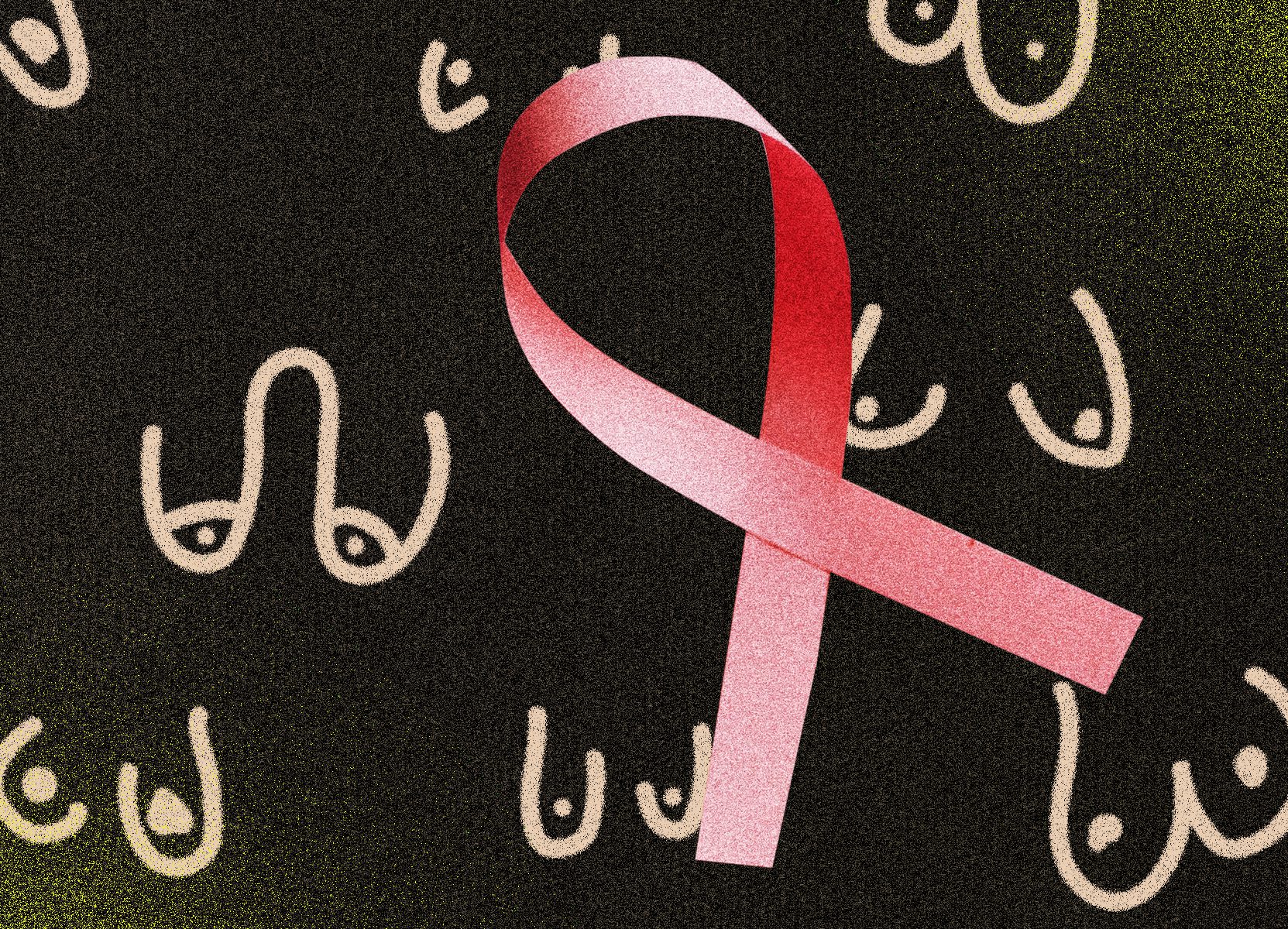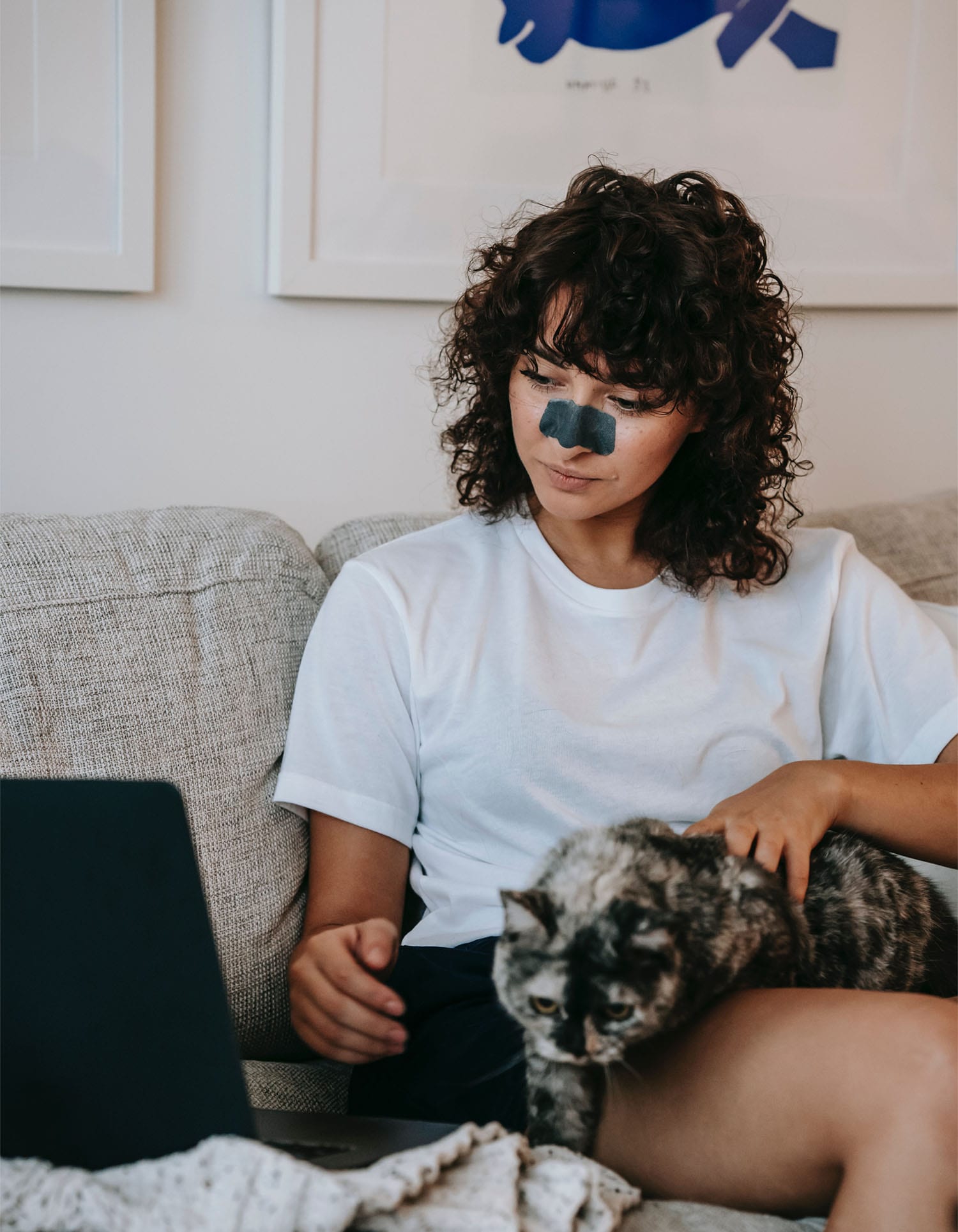Is it just hormonal, or could it be something more serious?
If you’ve ever experienced sore, tender, or painful boobs, you know how disruptive (and alarming) the sudden onset of breast pain can be. But let’s start with the good news: Breast pain, or mastalgia, is rarely a sign of breast cancer. 1 So, while October is Breast Cancer Awareness Month, you can take a deep breath if that’s where your initial boob pain fears landed.
Sore breasts are most often associated with puberty, premenstrual syndrome (PMS), menstruation, pregnancy, childbirth, or menopause—pretty much anytime your body undergoes significant hormonal changes. For many, boob pain is cyclical, showing up at right around the same time each month. And, yes, it’s usually harmless—but its cyclical nature can make it difficult to know when or when not to sound the alarms when soreness occurs.
Don’t take breast pain lightly: If you’re experiencing pain that’s unbearable, occurs frequently, and/or is disturbing your lifestyle, consult your doctor right away. While it’s very rarely connected to breast cancer, it could be a sign of something else going on.
Here’s what you need to know about breast pain—and when you should talk to a doctor.
The different types of breast pain
Breast pain can be described as either constant or occasional tenderness, sharp, stabbing, throbbing, burning, or tightness in the breasts. Before we go any further, we want to clarify that breast tissue is not only associated with women but with men and transgender individuals, as well. 2
There are two main categories of breast pain. The first is cyclical and changes with your hormones. Cyclical breast pain often involves both breasts (entire or upper outer portion) and may radiate to the armpit. As it varies with your menstrual cycle, cyclical breast pain is usually worse the week before your period starts. During this time, your boobs may feel lumpier, too.
Cyclical breast pain is the most common type of boob pain, and it usually doesn’t require any medical evaluation or treatment. 3
The second type is non-cyclical breast pain, which is quite uncommon and is not connected to your menstrual cycle. Generally, this type of breast pain is constant or intermittent and is only felt in one, centralized location.
So, what’s the cause of noncyclic breast pain? It may seem silly to say, but the most common cause is a poor-fitting bra. Raise your hand if you’re guilty of having one or two of these? Others include pregnancy, muscle strain, prior surgery, and trauma. Although breast cancer is usually not painful, in those infrequent instances that it is, the pain tends to be non-cyclical. 4
What causes boob pain?
As we mentioned briefly above, there are numerous reasons why breast pain can occur. It’s not uncommon to experience breast pain during:
- Puberty
- Menstruation
- Premenstrual syndrome (PMS)
- Pregnancy (primarily during the first trimester)
- The days following childbirth
- Menopause
In some cases (and far less frequently), breast pain or tenderness may be associated with a breast abscess or a benign cyst. 5
Lastly, fibrocystic breast tissue—which causes breasts that feel lumpy—can also be associated with breast pain. For individuals with fibrocystic breasts, pain and tenderness are often cyclical. Fibrocystic breasts are not necessarily linked to breast cancer; the lumps are benign, fluid-filled cysts rather than a mass of cells. 5

My boobs are sore, but I’m not pregnant: Should I see my doctor?
It’s easy to associate sore boobs with pregnancy, but in those times when pregnancy is most certainly not the case, you should ask yourself these questions:
- Do you have any signs of infection, including redness, drainage from the area, or swelling?
- Have you noticed any discharge from your nipples?
- Is the pain getting worse?
- Does the pain follow a pattern, such as hitting a peak right before or during your period each month?
- Is the pain in only one localized area?
- Is the pain affecting your daily life, limiting what you can and can’t do?
- Have you noticed a lump in your breast tissue?
If you’ve answered yes to any of these questions, it’s better to be safe and contact your doctor immediately. This does not mean that there is something seriously wrong. It just means you’re being proactive about your overall health.
How to do a breast self-exam
Every person, whether AFABAFAB stands for “assigned female at birth.” or AMABAMAB stands for “assigned male at birth.”, should know the signs and symptoms of breast cancer. One great preventative routine to start, if you haven’t already, is to practice monthly breast self-exams. If you’re a forgetful person, mark your calendar to hold yourself accountable. If you get bored easily with rudimentary tasks, make it fun by inviting your partner in on your self-care.
By performing monthly breast self-exams, you may be able to detect changes that indicate signs of infection or breast cancer, including lumps or irregular spots. Quick disclaimer, however: While self-exams are extremely important, they should not replace regular exams and screenings performed by a healthcare provider—including (and especially) mammograms.
Self-exams are quick to perform and easy to weave into your routine. If you know that breast changes or cancer runs in your family (or even if it doesn’t), you might also benefit from recording your self-exams on paper: Jot your findings in a journal or in a note on your phone and bring it with you to your next doctor’s appointment.
So, how does one perform a breast self-exam? Let’s begin our tutorial.
1. Visual Inspection
Before dressing (no bra or shirt), put your arms by your sides. Stand in front of a mirror if you have one handy. Take notice of any changes in the shape of your breasts, including swelling, dimpling in the skin or changes in the nipples. Next, raise your arms high and look for the same types of changes. Finally, put your hands on your hips. While doing so, flex your chest muscles by pressing firmly. Quickly observe any additional changes. 6
2. Manual inspection while standing up
While undressed, use your right hand to examine your left breast and your left hand for your right breast. With the pads of your three middle fingers, press on every part of your breast, using light pressure, then medium, and then firm.
What you’re feeling for are any lumps, thick spots, or other changes in your breast tissue. One way to ensure you’ve hit every spot is to move in a circular pattern (like a pinwheel). Then, press the tissue along the sides, under your arm. Lastly, make sure that you check your areolas and squeeze your nipples to check for any bit of discharge.
3. Manual inspection while lying down
When lying down, your breast tissue is more evenly distributed along the chest wall. Grab a pillow and place it under your right shoulder and put your right arm behind your head. Using your left hand, move the pads of your fingers around your right breast, gently covering both your entire breast area and armpit. Transition from gentle pressure to medium, and then finally firm pressure.
Remember to again squeeze your nipple to look for any sign of discharge. Also, check for lumps. When you’re finished with the right breast, follow the same steps with the left. 6
As mentioned before, if you’re looking to turn your self-exam into more of a group effort, invite your partner to help. You can still use the same steps above—just make sure you don’t get distracted before you finish your exam!
Key takeaways
In almost any circumstance, sudden, severe, or recurrent pain warrants a trip to the doctor. Breast pain is no exception. While most instances of breast pain are benign—and very rarely linked to cancer—it’s still a good idea to bring up any changes with your body to your healthcare provider.
In addition, make sure you’re keeping up with your regular physical exams and OB/GYN appointments. Don’t slack off on screenings: Talk to your doctor about when you should start getting yearly mammograms. For most people, the first mammogram is recommended at age 40 or around then.
If hormonal changes are to blame for your breast pain (especially common with cyclic breast pain), there isn’t always a guaranteed cure or method of prevention. Usually, it will resolve on its own after your hormones settle back to ‘normal.’ However, taking an over-the-counter pain reliever, switching to a more supportive bra, applying a heating pad, or cutting back on salt in your diet can help with pain or tenderness in the interim. 3
Both during Breast Cancer Awareness Month and beyond, we want to reiterate the importance of checking in with yourself and keeping tabs on your physical health—and that includes breast self-exams. If you don’t already check in on your boobs once a month, set a reminder for yourself and try to incorporate it into your routine. Remember: The earlier a malignant lump is found, the better your chances of treating it successfully. Give your chest some love and remind your friends to self-examine, too!
This article is informational only and is not offered as medical advice, nor does it substitute for a consultation with your physician. If you have any gynecological/medical concerns or conditions, please consult your physician.
© 2021 The Flex Company. All Rights Reserved.





